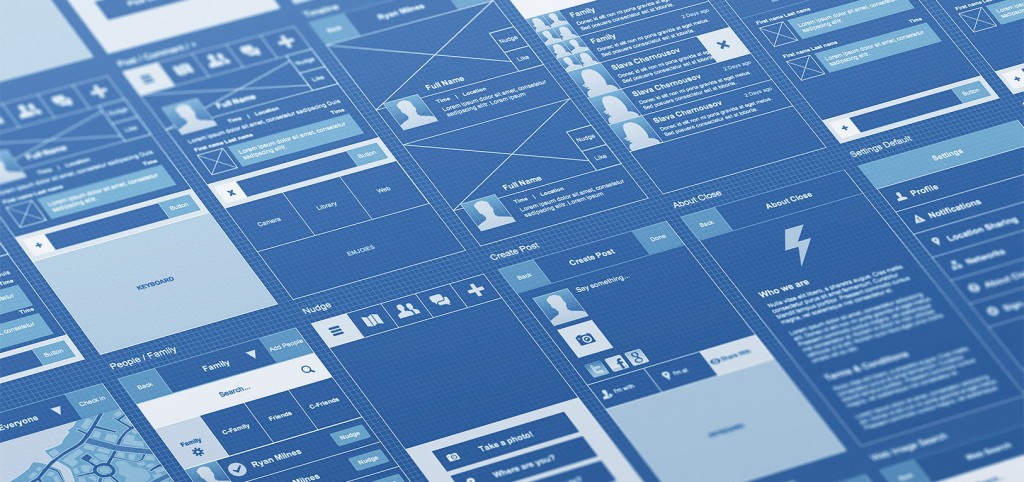New mobile internet trends have caught my attention this week. Today, we look at their impact on the news business.

In developing countries, mobile growth keeps accelerating.
- In Nigeria (pop: 173 million, median age: 18), based on page views count, 76{69ae0a25d93a3bfb4c7a14c6cb5bc2b4db8e6111ae4c35307d8a6dded8443ab9} of internet traffic now comes from mobile.
- In India (pop: 1.25 billion), the rate is 65{69ae0a25d93a3bfb4c7a14c6cb5bc2b4db8e6111ae4c35307d8a6dded8443ab9}. As a comparison, the proportion is 23{69ae0a25d93a3bfb4c7a14c6cb5bc2b4db8e6111ae4c35307d8a6dded8443ab9} in the UK, 22{69ae0a25d93a3bfb4c7a14c6cb5bc2b4db8e6111ae4c35307d8a6dded8443ab9} in the United States and 14{69ae0a25d93a3bfb4c7a14c6cb5bc2b4db8e6111ae4c35307d8a6dded8443ab9} in France.
At least, four elements drive mobile growth in emerging countries:
- Cellular infrastructure development (see this example in Papua New Guinea) is speeding up thanks to lower hardware costs, better performance, better reliability and energy efficiency. Moore’s Law and Metcalfe’s Law are acting as an unabated growth engine.
- The battle between Asian handset makers; hundreds of millions units, if not billions, are at stake here, and it will be an Android-only market.
- Huge numbers of cheap smartphones will boost the application ecosystem for commerce, education and health.
- The rivalry between Facebook and Google. Aside from their futuristic internet-in-the-sky projects based on drones, balloons or satellites, the two internet giants are working on super fast lightweight apps fit for 3G or even 2G networks, such as the recent introduction of Facebook Lite app.
All of the above is also good news for publishers who will enjoy a much larger reach with small distribution costs through basic applications.
In Western countries, mobile in now part of everyone’s life:
Nine Millennials out of ten admit always carrying their mobile with them.
- Six out of ten believe every piece of their online activity will be done through a smartphone within 5 years
- In 2015, mobile captures 51{69ae0a25d93a3bfb4c7a14c6cb5bc2b4db8e6111ae4c35307d8a6dded8443ab9} of time spent on digital media. But ad spending doesn’t follow: It accounts only for 14{69ae0a25d93a3bfb4c7a14c6cb5bc2b4db8e6111ae4c35307d8a6dded8443ab9} of the total ad investment on digital.
- Now, if we put this in context with the entire media consumption including TV, print, etc. (for the US market), the result is not good news for print media: Newspapers and magazines capture only 4{69ae0a25d93a3bfb4c7a14c6cb5bc2b4db8e6111ae4c35307d8a6dded8443ab9} of time spent on various media, but still retain 18{69ae0a25d93a3bfb4c7a14c6cb5bc2b4db8e6111ae4c35307d8a6dded8443ab9} of the advertising investment. Compare this to mobile: 24{69ae0a25d93a3bfb4c7a14c6cb5bc2b4db8e6111ae4c35307d8a6dded8443ab9} of time spent for all media (that’s 6x more than print), but only 8{69ae0a25d93a3bfb4c7a14c6cb5bc2b4db8e6111ae4c35307d8a6dded8443ab9} of ad spending (less than half.) Guess who will lose in the inevitable adjustment? Even if print media’s focus on niche, more affluent markets than mobile results in a better value for its ads, the rebalancing will be brutal.
- The use of mobile now extends way beyond the nomadic segment: As underlined by A16z analyst Benedict Evans, mobile devices are no longer used exclusively on the go; for more than 90{69ae0a25d93a3bfb4c7a14c6cb5bc2b4db8e6111ae4c35307d8a6dded8443ab9} of users, they are used at home as well. More than ever, mobile-only content production will make sense, especially for the news business.
The most visible evolution in mobile advertising will be the shift in screen formats, from the classic horizontal one inherited from the desktop internet, to the more mobile-friendly vertical presentation.
Today, according to Mary Meeker’s KPCB Internet Trends report, vertical screen usage accounts for 29{69ae0a25d93a3bfb4c7a14c6cb5bc2b4db8e6111ae4c35307d8a6dded8443ab9} of the time spent on digital media vs. 5{69ae0a25d93a3bfb4c7a14c6cb5bc2b4db8e6111ae4c35307d8a6dded8443ab9} five years ago. The ad community (driven by publishers rather than by creative agencies) is beginning to respond and that will change everything:
- Snapchat users are said to be nine times more likely to watch an entire ad because they don’t have to rotate their phone, according to Bloomberg BusinessWeek running a cover story on Snapchat’s strategy two weeks ago.
- Mobile video ads will tend to be much shorter (about 10 secs) than desktop ads, which settles the quandary of either skipping the ads after few seconds as You Tube does, or alienating users (people don’t come back when they are caught by unskippable, repetitive, and sometimes screaming ads.) Snapchat was so sure of having found the right formula with its 10 seconds clips that it began to charge $1000 CPMs… It’s now down to $20 per thousand impressions, which is still 5x to 10x the price of a classic ad on mobile. Snapchat claims to do exceptionally well in video:
In a 23-page sales pitch it’s sending to ad agencies this month, the company says more than 60 percent of 13- to 34-year-old smartphone users in the U.S. are active on the service and together view more than 2 billion videos a day. That’s already about half the number of videos people watch on Facebook, which is seven years older and has 10 times as many members. - The last notable evolution on mobile that could impact the news business, is the rise of instant messaging services. Here is a list of the biggest (MAUs means Monthly Active Users):

Staggering figures, both for absolute volumes and growth rate. These services are to become platforms by themselves. Inevitably, they will be tempted to include news, which will be seen as potential differentiators aimed at increasing stickiness (Snapchat does it already). This could be seen as a good omen for news publishers: Some will see this as another distribution channel for their contents; but it’s a rather fragile one because these platform will never see news content more than a secondary — and disposable — offering.
Read the original post at Mondaynote.com
